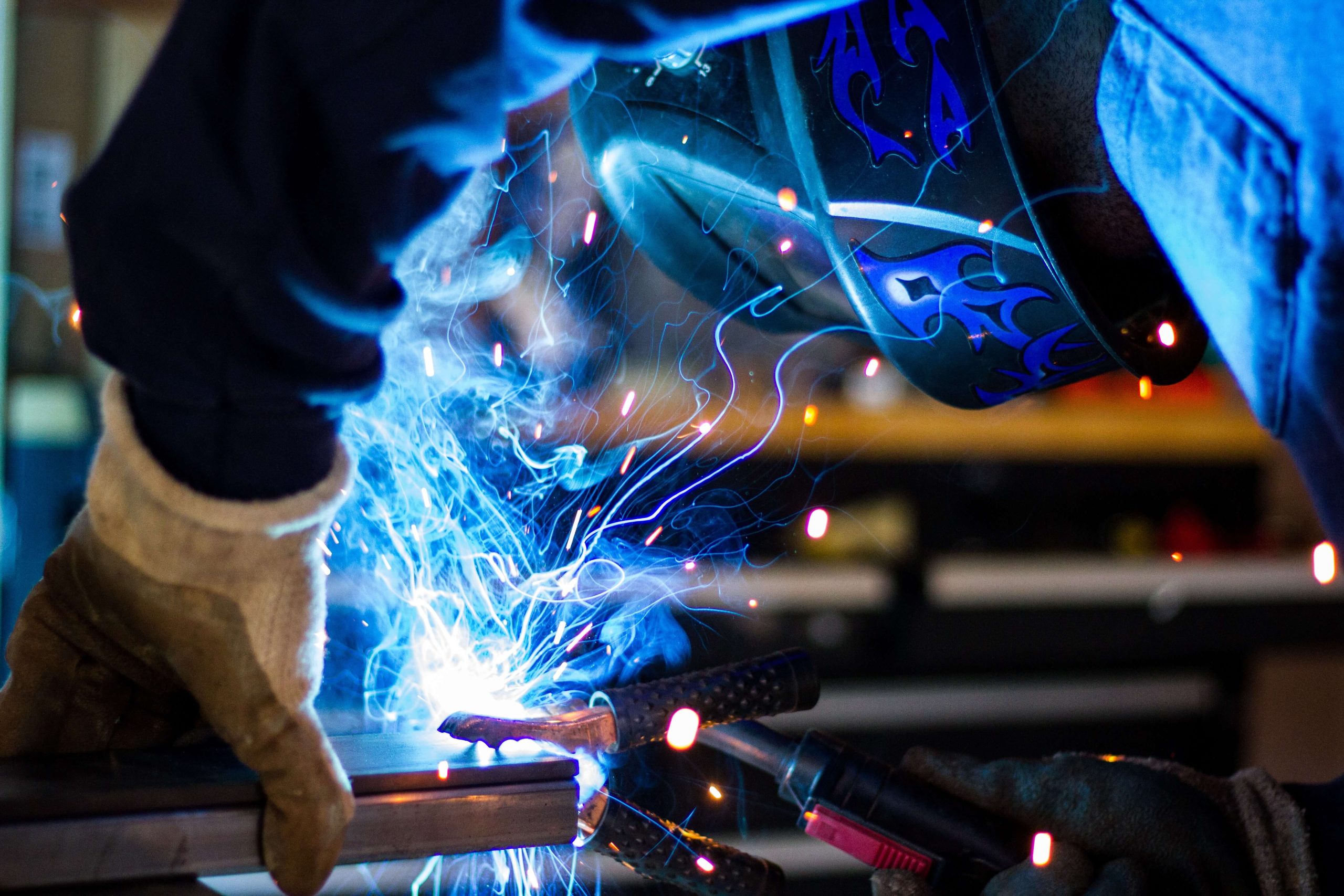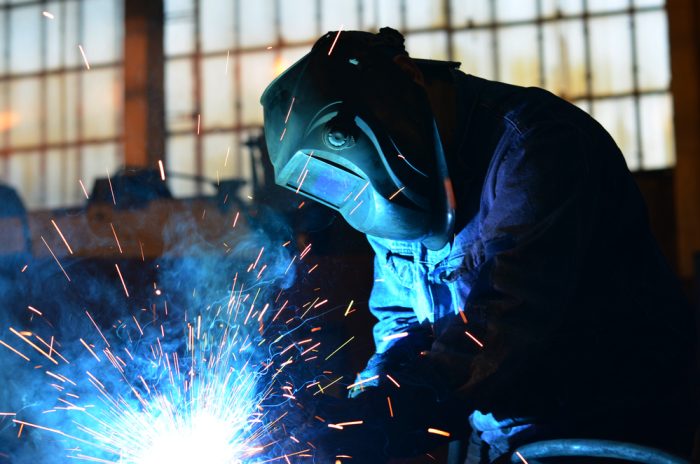Everything about Welding: Secret Insights Into Techniques and Best Practices for Success
Welding includes a selection of strategies, each fit for specific products and applications. Comprehending these techniques, such as GMAW, SMAW, and TIG, is necessary for accomplishing suitable outcomes. Furthermore, the right devices and safety practices can not be neglected. As prep work and repairing play essential functions in the welding procedure, understanding these aspects can considerably boost the top quality of the end product. What are the crucial aspects that assure an effective weld?
Recognizing Different Welding Techniques
Welding techniques include a selection of methods, each matched to details applications and materials. Among one of the most typical techniques are Gas Steel Arc Welding (GMAW), Secured Metal Arc Welding (SMAW), and Tungsten Inert Gas Welding (TIG) GMAW, additionally called MIG welding, is prominent for its speed and versatility, making it excellent for thin materials. SMAW, or stick welding, is favored for its simpleness and efficiency in outside atmospheres, specifically with thicker steels. TIG welding offers accuracy and control, making it suitable for intricate work and non-ferrous steels (Montana Mobile Welding and Repair). Each technique has its one-of-a-kind benefits and factors to consider, allowing welders to choose the most effective method based on the job's requirements, material kind, and preferred outcomes. Understanding these strategies is important for effective welding
Crucial Welding Tools and Tools
While numerous welding methods need details skills, the best tools and devices are just as necessary for accomplishing high quality results. Essential welding devices includes welding machines, which vary relying on the strategy-- such as MIG, TIG, or stick welding. Protective equipment, including headgears, aprons, and gloves, assurances safety and convenience during the process. On top of that, clamps and components help protect products in position, making certain accuracy in welds. Consumables like welding rods, cord, and securing gas are additionally crucial components that affect the quality of the weld. In addition, devices such as cutters and mills assist in surface area prep work and post-weld ending up, adding to a specialist end result. Purchasing top notch equipment ultimately enhances the performance and performance of welding jobs.
Safety Practices in Welding
Correct security practices are necessary in the welding sector to secure employees from potential dangers. Welders need to put on suitable personal safety equipment (PPE), consisting of safety helmets with proper shading, handwear covers, and flame-resistant clothing. Sufficient ventilation is vital to minimize exposure to hazardous fumes and gases produced throughout the welding process. In addition, workers need to be learnt the correct handling of welding devices to stop accidents. Fire safety measures, such as keeping combustible products far from the welding location and having fire extinguishers readily available, are needed. Regular assessments of tools and offices can assist identify possible dangers before they cause crashes. By adhering to these security techniques, welders can create a more secure working atmosphere and decrease threats related to their profession.
Readying Materials for Welding
Preparing materials for welding is an important step that greatly influences the top quality and integrity of the final product (Montana Mobile Welding and Repair). Proper preparation includes cleaning the surface areas to get rid of impurities such as rust, dirt, and oil, which can jeopardize the weld. Methods such as grinding, sanding, or making use of solvents are typically employed to attain a tidy surface. Additionally, making sure that the materials mesh well is essential; gaps can bring about weak welds. It's additionally vital to take into consideration the placement and positioning of the elements, as this will impact the convenience of welding and the last result. Selecting the appropriate filler product and guaranteeing compatibility with the base steels is crucial for achieving strong, resilient welds.
Tips for Achieving High-Quality Welds
Accomplishing top quality welds calls for focus to information and adherence to finest methods throughout the welding process. Correct joint prep work is necessary, making certain surfaces are clean and complimentary from contaminants. Picking the appropriate filler material and welding method based upon the base steels is essential for perfect bonding. Maintaining regular travel speed and angle while welding can stop problems and advertise harmony. Additionally, regulating warmth input is crucial; excessive warmth can result in bending and compromised joints. Regularly examining the welds during the process permits prompt adjustments if needed. Utilizing suitable post-weld treatments, such as cleaning and tension relief, can boost the sturdiness and stability of the weld, ultimately ensuring an effective result.
Troubleshooting Typical Welding Issues
Welding usually presents obstacles that can influence the high quality and honesty of the last product. Common issues such as porosity, irregular weld grains, and overheating can arise, each calling for specific repairing methods. Understanding these troubles is essential for welders to enhance their abilities and attain perfect results.
Porosity Troubles Clarified
Porosity can often be ignored, it remains an important concern in welding that can compromise the stability of a finished product. Porosity refers to the presence of little gas pockets within the weld bead, which can lead and compromise the joint to early failing. This issue typically Go Here develops from pollutants, moisture, or incorrect shielding gas protection during the welding process. To mitigate porosity, welders ought to validate that the base materials are completely dry and tidy, utilize proper shielding gases, and preserve regular welding parameters. Routinely examining the tools and environment can also aid recognize possible concerns prior to they show up in the weld. Dealing with porosity successfully is necessary for achieving solid, durable welds that fulfill high quality standards.

Inconsistent Weld Beads
Inconsistent weld grains can greatly affect the quality and strength of a finished item. Different variables contribute to this concern, including inappropriate travel rate, wrong amperage settings, and inconsistent electrode angles. When the welder relocates also swiftly, a bead may appear narrow and do not have penetration, while relocating also slowly can trigger extreme build-up. Additionally, using the wrong amperage this hyperlink can result in either undercutting or extreme spatter, both of which concession weld stability. The welder's strategy, such as irregular torch activity, can additionally lead to irregular bead appearance. To minimize these issues, welders ought to concentrate on maintaining stable, regulated movements and ensuring proper tools settings to achieve uniformity in their welds. Consistency is essential to accomplishing trustworthy and strong welds.
Overheating and Bending Issues
Excessive heat throughout the welding process can result in considerable overheating and contorting concerns, influencing the structural integrity of the workpiece. These troubles typically show up as distortion, which can compromise placement and fit-up, making more setting up testing. Factors adding to overheating include the option of welding parameters, such as voltage and travel rate, in addition to the kind of material being welded. To minimize these problems, welders need to keep constant travel speed and appropriate warmth input while monitoring the work surface temperature level. In addition, preheating or post-weld warm treatment can assist relieve stress and anxieties triggered by quick cooling - Welding. Normal assessment and adherence to best techniques are vital in avoiding getting too hot and making certain the long life and dependability of welded frameworks
Regularly Asked Inquiries
What Are the Profession Opportunities in the Welding Sector?
The welding market supplies varied occupation opportunities, including placements as welders, educators, engineers, and examiners. Experts can function in manufacturing, construction, aerospace, and vehicle fields, taking advantage of strong need and affordable salaries in numerous duties.
Just How Can I Enhance My Welding Speed Without Giving Up High Quality?
To enhance welding speed without sacrificing quality, one need to exercise efficient techniques, keep equipment, optimize setups, and improve hand-eye control. Regular training and looking for comments can additionally greatly contribute to achieving faster, premium welds.
What Certifications Are Offered for Welders?
Countless certifications exist for welders, consisting of those from the American Welding Culture (AWS), the National Center for Construction Education And Learning and Research Study (NCCER), and various industry-specific companies. These qualifications improve employability and show ability effectiveness.
Exactly How Does Welding Affect the Qualities of Metals?
Welding affects the homes of metals by altering their microstructure, which can lead to changes in stamina, firmness, and ductility. Heat input and air conditioning prices during the process greatly affect these product features.
Can I Bonded Dissimilar Metals With Each Other?
